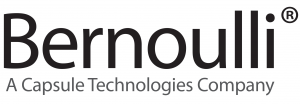Continuous Surveillance of Sleep Apnea Patients
Peer-reviewed results of patented surveillance application reveals promise of real-time patient safety initiatives in hospitals and health systems
Milford, CT—May 24, 2017—Bernoulli, the leader in real-time solutions for patient safety, announced the publication of a peer-reviewed study demonstrating the use of patented real-time analytics, medical device connectivity and combinatorial alarms to provide remote centralized continuous monitoring of post-surgical patients at risk for opioid-induced respiratory depression (OIRD).
Continuous Surveillance of Sleep Apnea Patients in a Medical-Surgical Unit1 in the May/June 2017 issue of the Journal of Biomedical Instrumentation & Technology consists of two separate studies on the use of continuous capnography monitoring at a medical-surgical unit at Virtua Health System in New Jersey.
The study’s results suggest that combinatorial alarm signals based on multi-parameter assessment reduced overall load better than individual-parameter sustained alarm signals and appeared to be more effective at identifying at-risk patients.
Using only sustained alarms as the filter for notifications reduced alerts from 22,812 to 13,000. However, passing multiple series of data through a multi-variable rules engine that monitored the values of pulse (HR), oxygen saturation (SpO2), respiratory rate (RR), and end-tidal carbon dioxide (ETCO2) in order to determine which alarms to send to the nurse-call phone system further reduced alerts to just 209—a 99% reduction.
“More importantly, clinical staff was alerted for every patient that experienced an actual respiratory depression episode,” said the study’s co-author, John Zaleski, PhD, CAP, CPHIMS, Chief Analytics Officer of Bernoulli. “The successful implementation of real-time patient safety initiatives have long been a goal of health system CIOs, but recognizing and responding to signs of patient deterioration requires medical devices connectivity as well as clinician’s access to real-time data.”
A Growing Patient Safety Threat
The use of opioids, such as hydromorphone and morphine sulfate, are known to increase risk of respiratory depression in patients who have been diagnosed with or are at risk for obstructive sleep apnea (OSA).
More than half of medication-related deaths and 20,000 incidences of respiratory depression-related interventions annually are attributed to the delivery of opioids in a care setting, at a cost of approximately $2 billion per year to the U.S. healthcare system.
“Data from multiple sources may be required to achieve improvements in patient safety, including the EHR and real-time data from medical devices,” said Zaleski. “Moment-to-moment changes in patient vitals are not usually available in the long-term clinical record, so a hybrid approach involving both real-time and aperiodic and discrete data is required to improve the overall surveillance of these patients.”
Respiratory Depression Safety Surveillance
The solution leveraged in the study, Bernoulli’s Respiratory Depression Safety Surveillance (RDSS), includes patented analytics with multi-variable thresholds—adjustable by the care facility—to identify clinically actionable events while significantly reducing the overall number of alarms communicated to remote and mobile clinicians, mitigating the risk of alarm fatigue.
RDSS is flexible, adaptable and scalable from individual departments to enterprise-wide deployments. Its vendor-neutral architecture leverages the hospital’s existing investments in IT, network, wireless and mobile infrastructure, while its FDA class II clearance includes indications for use to provide remote monitoring and alarm surveillance.
Implications for Real-Time Healthcare
“Combining analysis with real-time data at the point of collection creates a powerful tool for prediction and clinical decision support,” said Zaleski. “The ability to track patients throughout the hospital, continuously add new devices, and distribute real-time patient monitoring to centralized dashboards and mobile devices should be a major consideration for CIOs tasked with achieving real-time healthcare capabilities.”
Beyond high-acuity areas, healthcare systems are creating a foundation for other real-time healthcare innovations, including clinical surveillance modules, medical device integration in an EHR and virtual ICUs.
“This study demonstrates the promise of using real-time data for myriad patient safety initiatives,” said Janet Dillione, CEO of Bernoulli. “In addition, Bernoulli’s RDSS solution sets the stage for a wide range of applications, including medical device integration, precision alarm notifications, and clinical surveillance modules in various care settings.”
Reference
1. Supe D, Baron L, Decker T, Parker K, Venella J, Williams S, Beaton K, Zaleski J. A pilot study in middleware-filtered capnography alarms of continuously monitored obstructive sleep apnea patient in a medical-surgical unit. BI&T. May/June 2017.
About Bernoulli
Bernoulli is the leader in real-time solutions for patient safety, with more than 1,200 installed, operational systems. Bernoulli One™ is the market’s only real-time, connected healthcare platform that combines comprehensive and vendor-neutral medical device integration with powerful middleware, clinical surveillance, telemedicine/virtual ICU, advanced alarm management, real-time analytics and robust distribution capabilities into ONE solution that empowers clinicians with tools to drive better patient safety, clinical outcomes, patient experience, and provider workflow. For more information about Bernoulli One™, visit www.bernoullihealth.com. Follow us on LinkedIn and Twitter . Visit our Resource Center to download case studies, white papers and articles.


 In 2013, the Virtua (1,009 beds across three hospitals) prioritized narcotic safety. The hospital system responded by implementing non-invasive capnography monitoring and continuous pulse oximetry monitoring on medical-surgical units. Capnography is used to measure exhaled end-tidal carbon dioxide (EtCO
In 2013, the Virtua (1,009 beds across three hospitals) prioritized narcotic safety. The hospital system responded by implementing non-invasive capnography monitoring and continuous pulse oximetry monitoring on medical-surgical units. Capnography is used to measure exhaled end-tidal carbon dioxide (EtCO